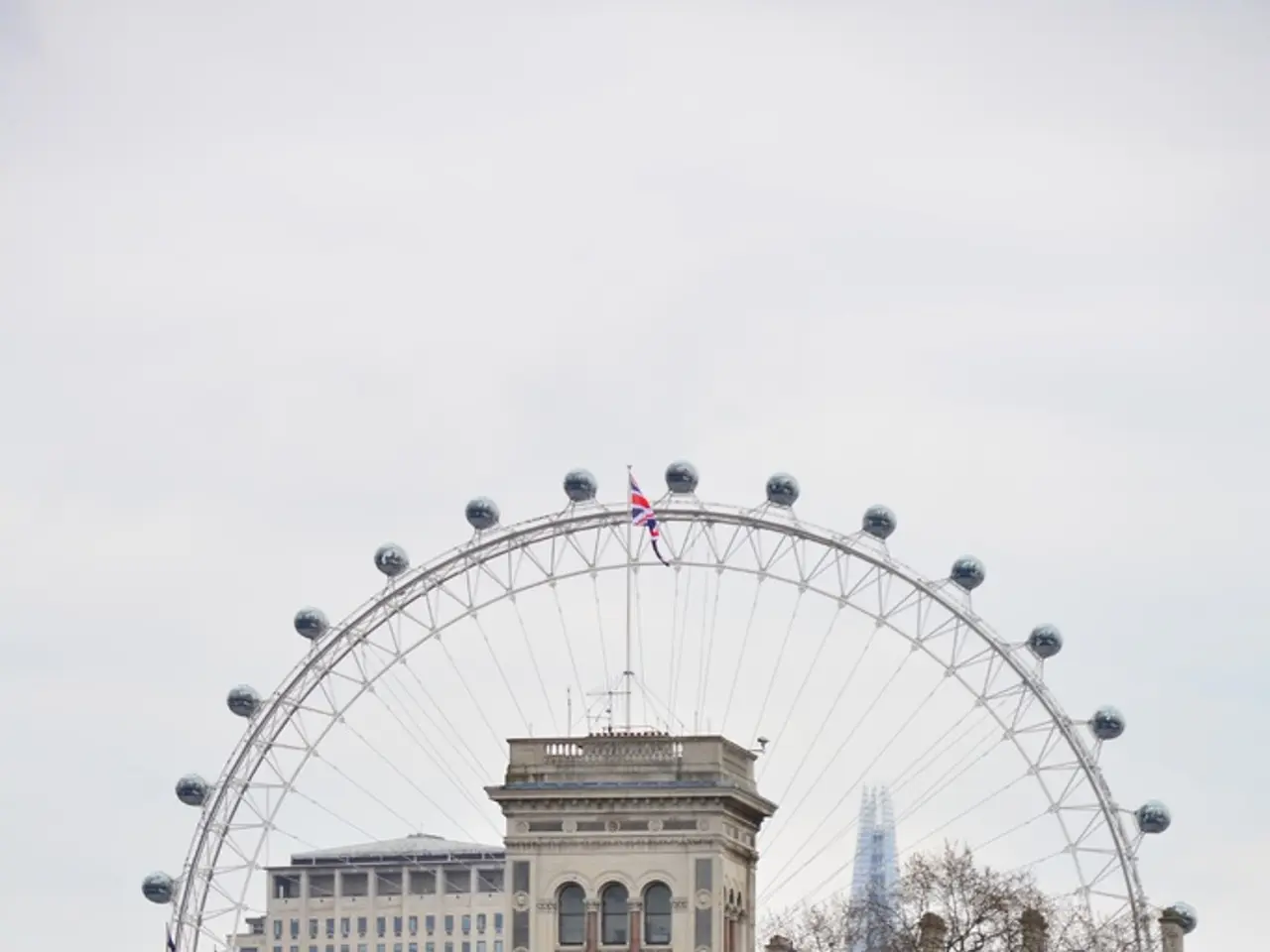White storks making a comeback to London? Opinions solicited on the symbolic bird
In an exciting development for nature lovers and city dwellers alike, a public survey has been launched to gauge Londoners' opinions on the potential return of white storks to the city. This initiative is led by Citizen Zoo, an urban rewilding group, and the University of Brighton, with researcher Dr Rachel White at the helm [1][2][4][5].
The survey aims to assess political and public enthusiasm, and evaluate the availability of suitable habitats for white storks in London. This is a crucial step in ensuring that rewilding efforts align with community values, as London could potentially become a pioneering city where white storks coexist with urban life [1][2][3].
White storks, once a common sight in Britain's skies, disappeared from London due to hunting and habitat loss around 600 years ago. However, recent years have seen a surge in white stork sightings in and around the capital, suggesting that the city may now offer suitable habitats [2][3].
The success of the Sussex White Stork Project, which has seen rehabilitated storks breed since 2020, has further fueled the excitement. White storks historically nested on rooftops, trees, and buildings in London and thrive in urban habitats across Europe. If successful, London could become a new home for these iconic birds [1][2].
The survey consists of two phases: surveying 1,000 Londoners and asking residents and frequent visitors for their views on white storks in the capital. The results will guide whether natural colonization is encouraged or if active release programs are needed [1][2][4].
Dr White emphasizes the importance of monitoring stakeholders' opinions and attitudes towards any reintroductions to ensure project success. "It's vital that we understand the public's perspective on this," she says. "Their support is crucial for the project's success" [1].
White storks have ecological benefits, with their large nests providing habitats for various species. By supporting this project, Londoners can help enrich the city's biodiversity and connect with nature [1][2][3][4][5].
If the survey results are positive, the next step could be creating more habitats to encourage natural colonization or a release similar to that in Sussex. Conservationists are considering whether white storks, known to thrive in urban settings on the continent, could do the same in London [1][2].
To participate in the survey, visit the link below:
https://app.onlinesurveys.jisc.ac.uk/s/brighton/thoughts-on-london-storks
White storks are talismanic and iconic species that attract attention and inspire people about nature. If successful, the return of white storks to London could be a significant step in urban conservation efforts, demonstrating that even the busiest cities can be consciously designed to support wildlife [1][2][3][4][5].
Sources: [1] BBC News. (2023, March 15). London survey asks public views on white stork return. Retrieved from https://www.bbc.co.uk/news/uk-england-london-64716248
[2] The Guardian. (2023, March 15). London public invited to share views on potential return of white storks. Retrieved from https://www.theguardian.com/environment/2023/mar/15/london-public-invited-to-share-views-on-potential-return-of-white-storks
[3] The Independent. (2023, March 15). Could white storks return to London? Public survey seeks views on reintroduction. Retrieved from https://www.independent.co.uk/news/uk/home-news/white-stork-london-survey-reintroduction-b2282873.html
[4] Citizen Zoo. (2023). Citizen Zoo's White Stork Project. Retrieved from https://www.citizenzoo.org/projects/white-stork
[5] University of Brighton. (2023). Dr Rachel White. Retrieved from https://www.brighton.ac.uk/about/our-staff/dr-rachel-white.aspx
- The survey conducted by Citizen Zoo and the University of Brighton, led by Dr Rachel White, aims to assess Londoners' opinions on the potential return of white storks to the city, as part of an urban rewilding initiative.
- The success of the project could lead to the creation of more habitats to encourage natural colonization or a release of white storks, helping enrich London's biodiversity and connecting residents with nature while demonstrating that busy cities can be designed to support wildlife.





